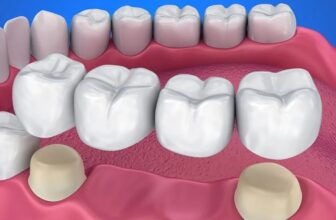
“Uncover how dietary changes can transform IBS management. A new study shows that reducing sugar and starch can lead to better outcomes than the FODMAP diet.”
Unraveling IBS: How Low Sugar and Starch Diets Compare to the FODMAP Diet
Irritable Bowel Syndrome (IBS) is a troublesome condition affecting millions worldwide, bringing along belly pain, bloating, and unpredictable bowel habits. If you or someone you know is among the many seeking relief, you may have stumbled upon the FODMAP diet. But did you know that low sugar and starch diets can also bring similar improvements? Let’s explore how these dietary changes can make a world of difference for those grappling with IBS.
Understanding IBS and Its Triggers
IBS can feel like a storm brewing in your gut, leaving you feeling uneasy and uncomfortable. Many factors can trigger these symptoms, including specific foods. Foods high in sugar and starch, known for fermenting in the gut, can worsen the situation. So, could cutting back on these foods ease your symptoms as effectively as the FODMAP diet?
The FODMAP Diet Explained
The FODMAP diet focuses on reducing foods high in fermentable oligosaccharides, disaccharides, monosaccharides, and polyols. This may sound complex, but the goal is simple: avoid foods like certain fruits, dairy products, and grains that can ignite your IBS symptoms. Many people find amazing relief through this tailored approach.
Low Sugar and Starch Diet: A Compelling Alternative
Imagine walking through a candy store, yet choosing not to indulge. That’s the essence of a low sugar and starch diet. This approach focuses on reducing sugary snacks and high-starch foods like pasta and bread. When these types of food are minimized, the gut may process other nutrients more efficiently, leading to fewer flare-ups and a happier tummy.
Comparing the Two Diets
What’s fascinating is how patients on both diets report similar improvements in their IBS symptoms. People on the FODMAP diet often notice less bloating and fewer gastrointestinal troubles, but those who cut back on sugar and starches are finding relief as well. Does this mean there’s more than one path to feeling better?
Real-Life Experiences: Success Stories
Picture Sarah, who struggled with IBS for years. She tried the FODMAP diet but felt overwhelming. After switching to a low sugar and starch diet, she found it simpler and still saw a reduction in her symptoms. Then there’s Mike, who found that cutting out both sugar and starch turned his life around, allowing him to enjoy meals without fear. Their experiences show that it’s possible to manage IBS through varying approaches, tailored to personal preferences.
Making Dietary Changes: What to Consider
Transitioning to a new diet can feel daunting, but taking small steps can help. Start by identifying your trigger foods. Then, consider trying a low sugar and starch diet for a while to see how your body reacts. Track your symptoms and pay attention to what works for you—your body is the best teacher.
Conclusion: Finding Your Path to Relief
Whether choosing the FODMAP diet or a low sugar and starch approach, the key lies in understanding your body’s responses to different foods. There’s no one-size-fits-all solution for IBS, but multiple pathways lead to relief. By examining both diets, those struggling with IBS can find a way to a healthier, happier lifestyle tailored to their needs. Making simple changes to your diet might just equip your gut to handle challenges more effectively. Enjoy your journey toward better digestive health!
BY________________GD
GOUTAM DANDAPATH
https://www.healthvibe.in.net







